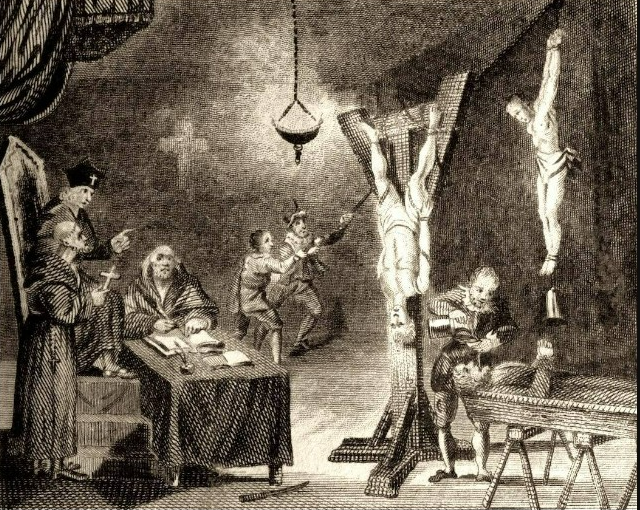The Unnerving Struggle to Remain A Hindu - V
19 Nov 2024 11:42:59
During the Portuguese rule, the voice and the social space of Hindus were gradually choked by the Church and administration equally. Many religious rituals were identified, and they were seen as responsible for keeping the unity in our society. They enhanced the feeling of belonging, and the Church looked at these as important barriers on their path. Along with ruling the country, spreading the message of Lord Christ was considered a significant objective. The method or means were insignificant as long as they were perceived as essential for bringing all under their faith. The king and the Church both played an equal role in this process. Some of the next write-ups explain the painful development supported by both.

Reading the details makes readers sense of the terrible phase of history.
St. Francis Xavier hardly had any knowledge of Goa or Indian culture before he came to Goa. ( It is essential to perceive his role objectively. )Obviously, he could not understand the people, their way of life,he used expressions like Pagan natives, malicious perverts, with no ideology, to describe people of Goa. He thought that Brahmins posed a set of hurdles on the road to change of faith. Almost all Portuguese church administrations had a similar opinion. They were attempts to wean the people of Goa from their culture, this was not a hidden fact.
The suggestion to ban the use of sacred thread was given with a similar intention. Barring some almost all wore it in Goa.
One resolution passed by the 1567 council stated the ban on wearing the sacred thread was essential.The next council held in 1575 too repeated it and suggested that Bishops be authorised to implement it. When this was not given the form of a law, again in 1585 the council suggested that it should be implemented strictly. The request was made that that it should be kept out of sight and the ' Upanayan ' was to be prevented. King Philip who was at the throne then, gave it a legal status. The provision of fine was made and half of the fine money was to be awarded to the informer. Wearing the thread was related to performing Hindu rituals. Seeing the sacred thread, the council stated was the cause that would upset the new converts. ( Obviously, every attempt was to convert people and to keep them from the old culture and values. ) Fortunately, nothing helped. The deities were placed outside the territory of Portuguese, people crossed over for religious rituals like Upanayana regularly. All wanted to have blessings of God with the Vedic mantras chanted. People went to Pandharpur, Tuljapur and Gokarna for the ceremony. Ultimately in 1726, all were allowed to conduct the ceremony in Cumbarjua, Cuncollim and Corjuem. Inviting people and using religious services for five days too was permitted. Prior permission was to be sought from the administration.
At the same time, the rituals for marriages or other festivities were also permitted, but behind closed doors. Violating the dictates was to be punished. Generations fought the battle silently but courageously, we need to remember this when all our rituals are mocked as meaningless or redundant. Even after using all their might, the foreign rulers( in this case the Portuguese) had to ultimately give in.
Bharat has abundant centres of pilgrimage, many of which are on the banks of the river Ganga. Pilgrimage has a very special status in our life journey. Of course, our foreign rulers ( all of them ) failed to understand this phenomenon. There are many such centres all over the country. Some rituals are performed at these places.
The missionaries had an objection to it, they felt new converts get confused seeing others visiting holy places. The second council urged the King to prevent people from crossing the Portuguese territory for any such events and make provisions of severe punishment for the violation. ( In all 5 such councils were conducted, the last in 1726 ) The king obliged by converting it in the form of a law. Even those who passed through the country were also prohibited and punished. ( Many used to take the Goa route to reach Sapta koteshwar temple in Narve and Chandrashekar Bhootnath temple in Quepem taluka. Of course, the pilgrims took a longer route avoiding the Goan soil.
As it is a custom, people always bring Kumkum or Ganga water or Gopichandan or Prasad in some form. It was customary to present such things to relatives and friends. Even this was banned by not allowing anything in boats by clergies. ( Many inclined that these were shared by officials among themselves ) When it was realised that people found some way out of it, travel to these places was prohibited during the festivals. The local Padre kept a strict vigil. Especially new converts were kept away from the influence.
Of course, people had their own way of doing what they earnestly wanted. All these details sound sometimes fancier than fiction. There is not even an iota of imagination in this, as there is sufficient documentary evidence available.